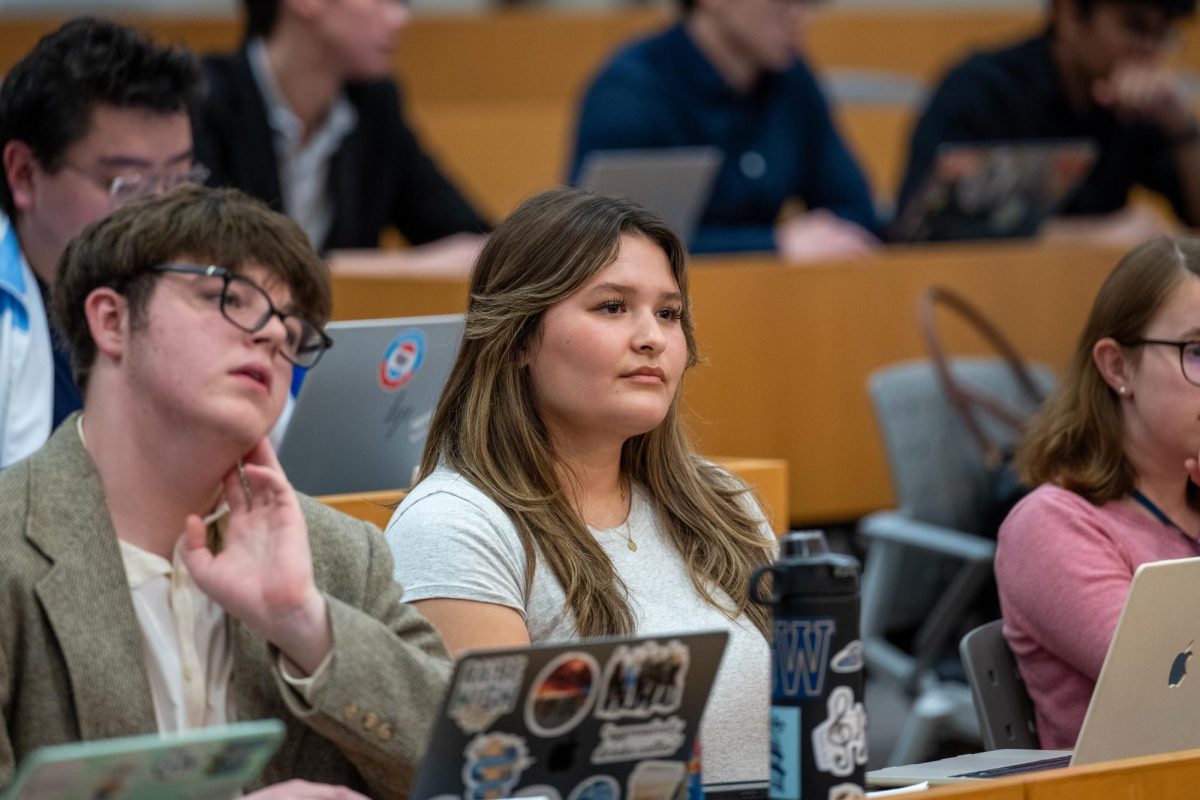A District Department of Transportation study presented at a Foggy Bottom community meeting Tuesday recommended the demolishing the Whitehurst Freeway.
The $540,000 study, which took more than two years to complete, examined the effects of 14 proposed construction and destruction plans, and how they would affect traffic. Of the 14 plans originally released in November 2005, the report only recommended five – all of which include tearing down the freeway, which runs along the Georgetown Waterfront.
The aboveground, four-lane thoroughfare connects K Street in Foggy Bottom with the Francis Scott Key Bridge in Georgetown. Commuters, including the Mount Vernon shuttle, use the road to bypass Georgetown traffic when traveling to and from Rosslyn, Va., or Northwest D.C.
Two of the five recommended plans include building a tunnel under K Street to take the traffic that the freeway carries. The other three plans present various ways to extend K Street to Canal Street, the Key Bridge or both. One proposal also includes significant enhancements to the intersection of 27th and K streets, which is currently the beginning of freeway.
According to DDOT, the study addresses Georgetown residents’ concern that the Whitehurst segregates Georgetown from its waterfront, which is undergoing a $15 million beautification project.
The study’s purpose is to “see if we can find an alternative way to the Georgetown downtown area,” said Kenneth Laden, project manager and associate director of transportation policy at DDOT. He said recent development in Georgetown and the beautification project call for the freeway’s demolition.
Ten years ago, the Georgetown waterfront was home to “a solid waste incinerator, an abandoned paper mill, old warehouses and was a dumping ground for public works,” Laden said.
The meeting was held at Francis Junior High School, located at 2425 N St. Representatives from DDOT and Daniel, Mann, Johnson, Mendenhall, Harris – the consultant agency hired by DDOT to conduct the study – were available to explain the results and field questions.
DMJM Harris categorized the 19 plans researched into four major types: tearing down the freeway and adding K Street exit ramps to Key Bridge and Canal Street; tearing down the freeway and a K Street exit ramp just to Canal Street; replacing the freeway with a tunnel under K Street; and leaving the freeway but making lane changes on K Street.
Community members in attendance were largely opposed to the study results.
“We are united in our opposition to the deconstruction of the Whitehurst Freeway,” said Barbra Kahlow, a representative of the West End Citizen’s Association and a vocal opponent of the deconstruction effort.
Foggy Bottom Association President Joy Howell agreed with Kahlow.
“We just don’t think that it’s been thought out very carefully,” Howell said. She added that green-silk ivy and white lights could be used to beautify the Whitehurst without causing traffic problems.
The West End Citizen’s and Foggy Bottom associations are neighborhood organizations that meet to discuss residential issues.
Community members expressed concerns with preservation of vegetation currently under the freeway, traffic and the previous rejection of Whitehurst deconstruction almost 20 years ago.
“In Foggy Bottom we are concerned that if the ramps on the east end are removed it will pave the way for development and loss of our green space,” said Ellie Becker, transportation liaison to the Foggy Bottom Association.
Concerns from the community will be recorded until Oct. 20, Laden said. Afterwards, they will submit a request to the mayor and city administration for a 12- to 18-month environmental impact study, he added.
If granted, the impact study will look into how the plan affects issues such as air quality, traffic, historical interests and cultural importance. After the next study, DDOT will still need approval from the D.C. Council. Laden said that if a plan is approved, design and construction will not take place for another five to six years.







